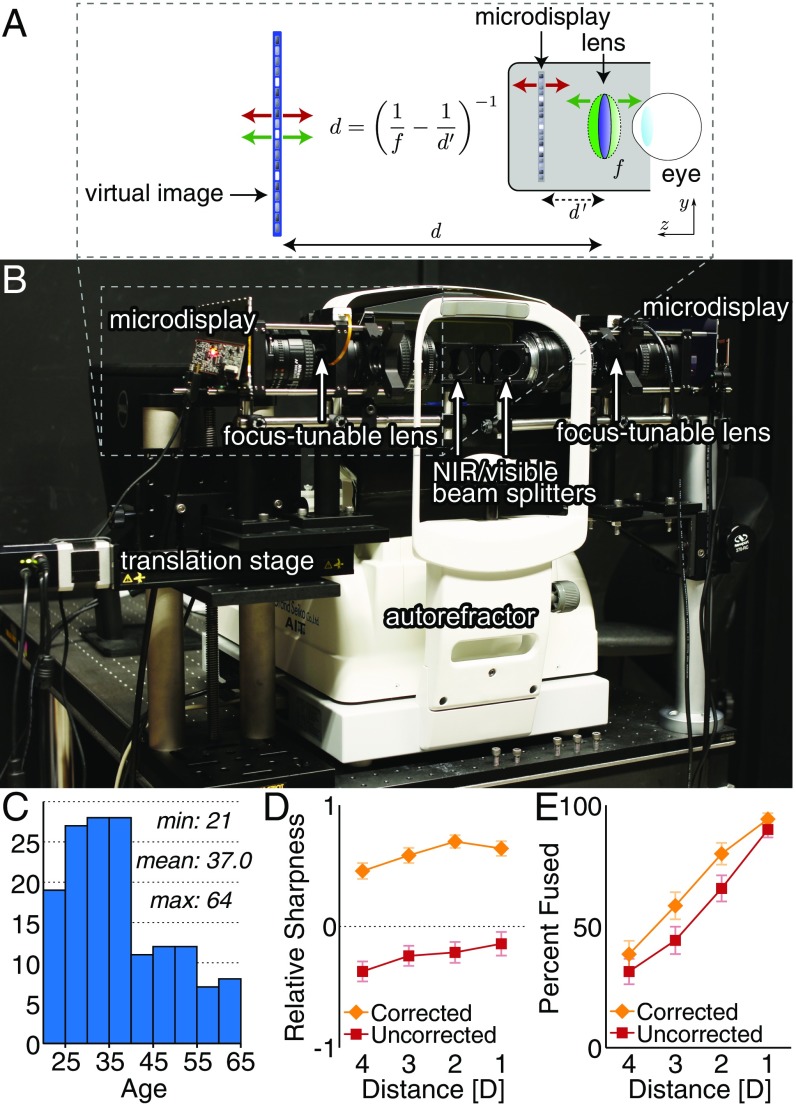Fig. 1.
(A) A typical near-eye display uses a fixed focus lens to show a magnified virtual image of a microdisplay to each eye (the eyes cannot accommodate at the very near microdisplay’s physical distance). The focal length of the lens, , and the distance to the microdisplay, , determine the distance of the virtual image, . Adaptive focus can be implemented using either a focus-tunable lens (green arrows) or a fixed focus lens and a mechanically actuated display (red arrows), so that the virtual image can be moved to different distances. (B) A benchtop setup designed to incorporate adaptive focus via focus-tunable lenses and an autorefractor to record accommodation. A translation stage adjusts intereye separation, and NIR/visible light beam splitters allow for simultaneous stimulus presentation and accommodation measurement. (C) Histogram of user ages from our main studies. (D and E) The system from B was used to test whether common refractive errors could quickly be measured and corrected for in an adaptive focus display. Average (D) sharpness ratings and (E) fusibility for Maltese cross targets are shown for each of four distances: 1–4 D. The x axis is reversed to show nearer distances to the left. Targets were shown for 4 s. Red data points indicate users who did not wear refractive correction, and orange data points indicate users for whom correction was implemented on site by the tunable lenses. Values of -1, 0, and 1 correspond to responses of blurry, medium, and sharp, respectively. Error bars indicate SE across users.

